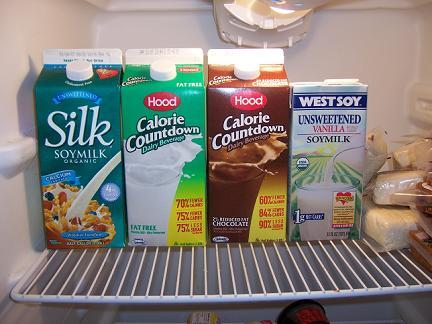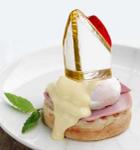Yesterday’s mention that I drink a kind of diet coke that doesn’t have caffeine or Aspartame prompted some questions about what kind I do drink.
Actually, it varies. Here’s a selection . . .
None of these kinds of diet coke have either caffeine or Aspartame in them. They are all sweetened with Splenda.
Here are a few notes on them:
1) Diet 7-UP used to have Aspartame but got rid of it a while back. It is the easiest form of Aspartame-free diet coke to find. One note though: There are variants of Diet 7-UP that still DO use Aspartame, such as Diet Cherry 7-UP. Beware of these. It is the regular Diet 7-UP that you want.
2) Diet Rite is also commonly found in supermarkets, and it was the first diet coke to chuck Aspartame in favor of Splenda, as far as I can tell. It comes in several flavors, which the Royal Crown company (which makes Diet Rite) switches around from time to time. They always have a Cola flavor (which, for some strange reason, upsets my stomach; I think I’m allergic to this flavor, though other people obviously aren’t), and lately they’ve had White Grape and Raspberry (which do just fine by my stomach). Occasionally they have Tangerine or other flavors. At the moment they have Cherry Cola, so I’ll see how that does with my stomach.
3) Diet Hansen’s has a BUNCH of different flavors. Pictured here are three of my favorites (which is why I had them on hand): Peach, Kiwi-Strawberry, and Black Cherry. They also have Tangerine-Lime, Ginger Ale, Root Beer, and Grapefruit. MORE INFO. The Diet Hansen’s drinks taste really good (or at least my favorites do). It’s a little harder to find Diet Hansen’s, though. I get it at Henry’s and Trader Joe’s, but I’ve also seen it showing up at some local Vons. You can also order it online.
Incidentally, all of these drinks (Diet 7-UP, Diet Rite, Diet Hansen’s) are also sodium free–so they’re not trying to Ferengi you into drinking more of their product by putting salt in it to make you thirsty (unlike most forms of coke).
There are also other, similar caffeine-free, Aspartame-free kinds of coke, but these are the ones that I drink the most and thus the ones that I had on hand.
BTW, a word about why you might want to avoid caffeine and Aspartame . . .
Most folks know that caffeine can make you feel wired, keep you awake, etc. And some people use it precisely in order to stay awake. I’m not opposed to that in principle. However, caffeine also has some side-effects that people don’t commonly know about.
If you drink enough of it quickly enough, it will raise your blood sugar (which is bad for diabetics and dieters) and it will raise your adrenalin (which is bad if you have high blood pressure or heart palpitations). INFO HERE. Caffeine is safe for most people in moderation–or at least safe enough that they’re willing to live with the obvious side-effects–but it’s something that I avoid as part of my diet since I don’t want my blood sugar raised.
Aspartame is another story. There is a huge controversy over the safety of Aspartame, and for a long time I didn’t pay it any mind. I generally don’t get freaked out about safety claims made regarding products that are being consumed by millions of people. If there’s a significant problem with the product then, in the long run, science will out.
But I started doing some research on Aspartame and found out some things that concerned me enough that I decided to cut it out of my diet. It breaks down into chemicals that I really don’t like. It does this at surprisingly low temperatures, too (lower than body temperature), which is why diet cokes that contain Aspartame frequently have gone "stale" before you open the can. They’ve been exposed to heat that causes the Aspartame to break down and they taste funny.
Even if they haven’t broken down already in the can, they will break down in your body, and one of the things they break down into is phenylalanine. Phenylalanine is something I’m familiar with from my diet and nutrition studies.
Phenylalanine is an amino acid that is common in nature. There’s some of it basically whenever we eat meat. But that form of phenylalanine is slowly-absorbed and is pretty safe. If you’re taking a nutritional supplement or chugging down diet cokes or certain protein drinks, though, it’s another story. In this setting phenylalanine is absorbed much more quickly and causes a spike of the amino acid in your blood stream.
For certain people, who can’t metabolize phenylalanine, Aspartame is very dangerous. These people have a condition known as phenylketonuria, and if they consume phenylalanine it will cause BRAIN DAMAGE.
In your body, about HALF of the Aspartame in a diet coke converts into phenylalanine, which is why products containing Aspartame are required to carry a warning label that says "Phenylketonurics: Contains phenylalanine."
Now, phenylketonuria is rare (though it is more common among people of Irish descent), and if you have it, you’d already know about it. It’s one of the things they test for right after birth, and if you’ve never been told that you have it then you don’t.
But phenylketonurics aren’t the only people who need to watch out for getting a phenylalanine spike in their blood.
Some dieters take phenylalanine because it suppresses hunger (a good thing for dieters), but in significant numbers of people it has bad side-effects, like raising your heart rate and blood pressure (not good things for people who are overweight).
If you have been chugging down diet cokes–even caffeine-free ones–and find your heart racing or pounding or your blood pressure staying higher than it should be, it may be the phenylalanine spike in your blood stream that the diet cokes are causing.
There are a lot of other criticisms that are made of Aspartame, but I already knew about phenylalanine from my own diet and nutrition studies, so when I found out that 50% of Aspartame turns into phenylalanine, that was enough to convince me to cut it out of my diet.
Y’all can make your own decisions, of course, but I’m not waiting for the science to catch up on this one. To my mind, Aspartame is too risky. I’ll stick with other sweeteners, like Splenda or Stevia.







